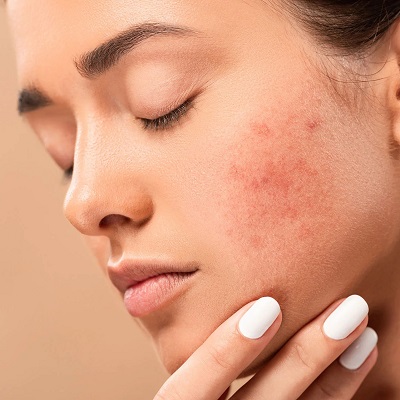Erasing the Marks: A Comprehensive Guide to Treating Acne Scars

Acne scars are a common aftermath of acne breakouts, often causing distress and self-consciousness. Fortunately, advancements in dermatological treatments offer effective solutions to diminish the appearance of acne scars and restore skin confidence. In this comprehensive guide, we’ll explore various treatments and skincare strategies aimed at erasing acne scars for good.
Understanding Acne Scars:
Before delving into treatment options, it’s crucial to understand the different types of acne scars. Atrophic scars, including icepick, boxcar, and rolling scars, result from a loss of tissue. On the other hand, hypertrophic and keloid scars occur when the body produces too much collagen during the healing process, leading to raised or bumpy scars. Each type of scar requires a tailored approach for effective treatment.
Benefits of acne scar treatment:
Topical Treatments:
Topical treatments serve as a foundational step in combating acne scars. Ingredients like retinoids, vitamin C, and alpha hydroxy acids (AHAs) help promote cell turnover, fade discoloration, and stimulate collagen production. Over-the-counter options can be effective for mild scarring, while prescription-strength formulations offer more significant results for moderate to severe scars.
Chemical Peels: Chemical peels provide a deeper exfoliation to reveal smoother skin and improve texture. Solutions containing acids such as glycolic acid, salicylic acid, or trichloroacetic acid (TCA) are applied to the skin, causing controlled damage to the top layers. As the skin peels off, it encourages the growth of new, healthy skin cells, reducing the appearance of scars and promoting an overall rejuvenated complexion.
Microneedling: Microneedling, also known as collagen induction therapy, involves using a device with fine needles to create micro-injuries in the skin’s surface. These tiny punctures stimulate the body’s natural healing process, triggering collagen and elastin production. Over time, this leads to smoother, firmer skin and a reduction in the appearance of acne scars. Microneedling can be combined with serums or platelet-rich plasma (PRP) to enhance results further.
Laser Therapy: Laser therapy offers targeted treatment for acne scars by delivering concentrated beams of light to the skin. Different types of lasers, such as fractional laser or pulsed dye laser, penetrate deep into the skin to stimulate collagen production and break down scar tissue. Laser treatments can effectively improve skin texture, reduce pigmentation, and minimize the appearance of scars with minimal downtime.
Dermal Fillers: Dermal fillers provide a temporary solution for depressed or indented acne scars. Injectable fillers containing hyaluronic acid or collagen are injected beneath the scar to add volume and smooth out the skin’s surface. While dermal fillers offer immediate results, they typically last for several months to a year, requiring periodic touch-ups to maintain the effects.
Combination Therapies:
In many cases, a combination of treatments yields the best results for acne scar treatment. Your dermatologist may recommend a personalized treatment plan that combines different modalities to address various types of scars and skin concerns. By targeting multiple aspects of scar formation and skin texture, combination therapies can achieve more comprehensive and long-lasting results.
Professional Skincare Regimens:
Maintaining healthy skin is essential for preventing new acne scars and preserving the results of treatments. A customized skincare regimen prescribed by a dermatologist can help address specific skin concerns while promoting overall skin health. This may include gentle cleansers, moisturizers, sunscreen, and targeted treatments to address acne and inflammation.
Conclusion:
Acne scars don’t have to be a permanent fixture on your skin. With the advancements in dermatological treatments and skincare technology, effective solutions are available to diminish the appearance of scars and restore skin confidence. Whether you opt for topical treatments, in-office procedures, or a combination of both, consulting with a qualified dermatologist is the first step towards achieving smoother, clearer skin. Don’t let acne scars hold you back any longer – take charge of your skin health and embrace a brighter, more confident future.







